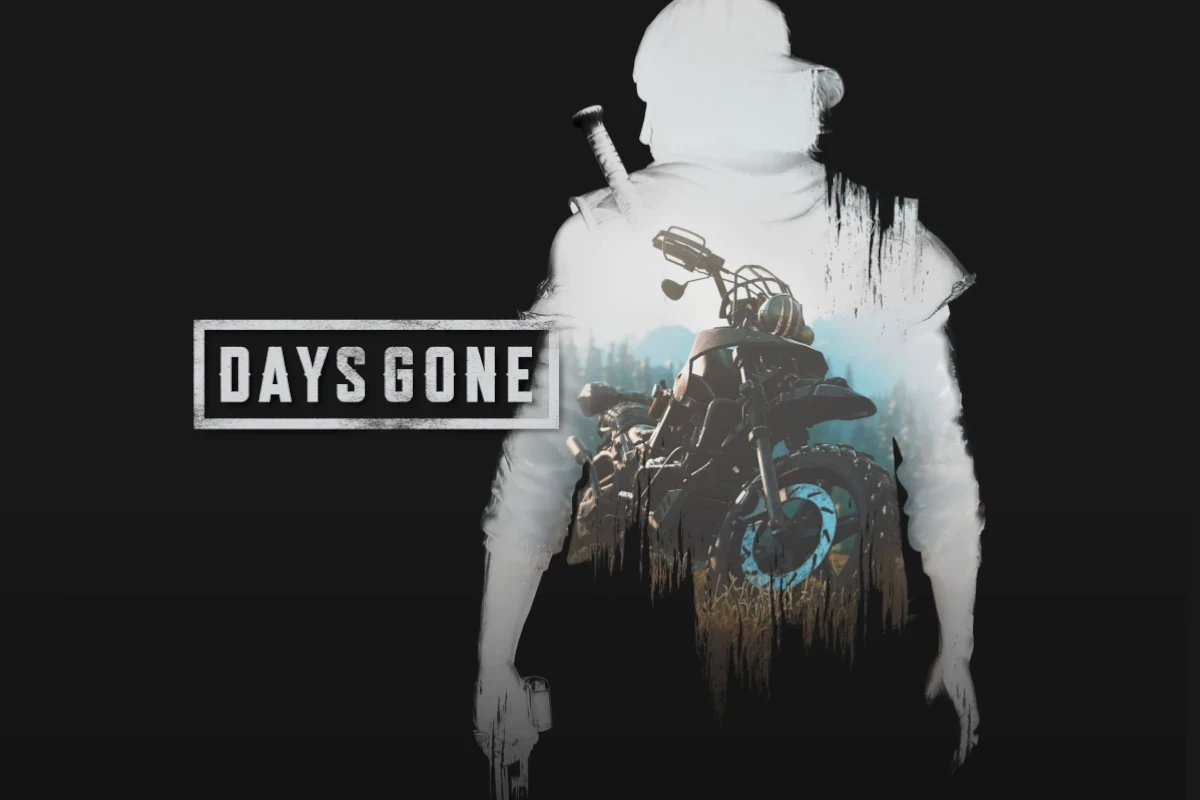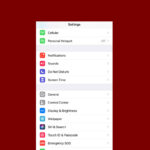Days Gone on Steam Deck offers gamers a thrilling post-apocalyptic adventure in a portable format. This open-world survival game challenges players to navigate a dangerous landscape filled with infected humans and hostile survivors. Optimizing Days Gone settings on Steam Deck enhances gameplay, balancing performance and visual quality for the best experience.
Finding the right configuration can be tricky. Players aim for smooth framerates without sacrificing too much graphical fidelity. The goal is to maintain immersion in the game’s detailed environments while ensuring responsive controls during intense action sequences.
Steam Deck owners have experimented with various settings to achieve optimal results. Some prefer higher frame rates for smoother motorcycle rides and combat, while others prioritize visual quality to fully appreciate the game’s atmospheric world. The table below outlines popular setting combinations reported by Steam Deck users.
| Setting | Recommended Value |
|---|---|
| TDP | 10 Watts |
| Frame Limit | 30-40 FPS |
| Resolution | 80-100% |
| Graphics Preset | Medium-High |
| FSR | On (Quality) |
Optimizing Days Gone on Your Steam Deck
Graphics Settings
Days Gone can be a demanding game, even for powerful PCs. To get the best experience on your Steam Deck, you’ll need to tweak some settings. Here’s a good starting point:
- Resolution: 1280×800 (or lower). This matches the Steam Deck’s native resolution and significantly improves performance.
- Display Mode: Borderless Window. This allows for smoother performance and easier access to the Steam Deck’s quick menu.
- Texture Quality: Medium. Lowering this setting can greatly improve frame rates without a significant visual impact.
- Shadow Quality: Low. Shadows can be resource-intensive, so lowering this setting is crucial for performance.
- Foliage Draw Distance: Low. Reducing the distance at which foliage is rendered can boost frame rates, especially in dense areas.
- Ambient Occlusion: Off. This graphical effect can be taxing on the system, and disabling it can provide a noticeable performance increase.
Advanced Settings
- FSR: Enabled. AMD’s FidelityFX Super Resolution (FSR) can significantly boost performance by rendering the game at a lower resolution and upscaling it. Experiment with different FSR settings to find the best balance between performance and visual quality.
- Shader Cache: On. This can help reduce stuttering and improve loading times.
- VSync: Off. Disabling VSync can reduce input lag.
Additional Tips
- TDP Limit: Consider lowering the TDP limit in the Steam Deck’s quick access menu to conserve battery life and reduce heat.
- Refresh Rate: Set the refresh rate to 40Hz or even 30Hz. This can significantly improve battery life and provide a more consistent frame rate.
- Proton Version: Experiment with different Proton versions. Some versions may offer better compatibility and performance with Days Gone.
Steam Deck Controls for Days Gone
Days Gone has a lot of controls, but the Steam Deck handles them surprisingly well. You can use the trackpads for precise aiming, and the back buttons can be mapped to frequently used actions like sprinting or healing. Here’s a possible control layout:
| Action | Button/Input |
|---|---|
| Move | Left Joystick |
| Look Around | Right Joystick |
| Aim | Right Trackpad |
| Shoot/Attack | R2 |
| Interact | R1 |
| Sprint | L1 |
| Crouch | B |
| Cycle Weapons | Left Trackpad Click |
| Melee | Right Trackpad Click |
| Quick Turn | Left Back Button |
| Heal | Right Back Button |
Remember, you can customize the controls to your liking in the Steam Deck’s controller settings. Experiment with different layouts to find what works best for you.
Initial Setup for Days Gone on Steam Deck
Optimizing Days Gone for the Steam Deck requires adjusting default settings and selecting the right Proton version. These steps ensure smooth gameplay and enhanced performance on the handheld device.
Adjusting Default Settings
To optimize Days Gone on Steam Deck, start by tweaking the in-game graphics settings. Set the quality preset to Medium. Adjust the resolution to 1280×800 for better performance. Turn off motion blur and chromatic aberration to reduce visual noise.
Lower shadow quality to improve frame rates. Set texture quality to Medium for a balance of visuals and performance. Disable vertical sync to reduce input lag. Adjust foliage draw distance to Medium to maintain a steady frame rate in dense areas.
Enable FSR (FidelityFX Super Resolution) if available. This upscaling technology can boost performance without significant visual quality loss.
Proton Version Compatibility
Selecting the right Proton version is crucial for Days Gone’s performance on Steam Deck. Proton 7.0-4 or newer generally works well with the game. To change the Proton version:
- Go to Steam Library
- Right-click on Days Gone
- Select Properties
- Navigate to Compatibility
- Check “Force the use of a specific Steam Play compatibility tool”
- Choose Proton 7.0-4 or the latest stable version
Test the game with different Proton versions if issues arise. Some players report better results with experimental versions. Update Proton regularly to benefit from performance improvements and bug fixes.
| Setting | Recommended Value |
|---|---|
| Quality Preset | Medium |
| Resolution | 1280×800 |
| Motion Blur | Off |
| Shadow Quality | Low |
| Texture Quality | Medium |
| Proton Version | 7.0-4 or newer |
Optimizing Display and Graphics Settings
Adjusting display and graphics settings for Days Gone on Steam Deck can significantly improve performance and visual quality. Fine-tuning these options allows players to balance smooth gameplay with crisp visuals.
Resolution and Render Scale
The Steam Deck’s native resolution is 800×500. Setting Days Gone to match this improves performance. Players can adjust the render scale to further optimize visuals and frame rates.
A render scale of 100% maintains the set resolution. Increasing it above 100% enhances image quality but impacts performance. Lowering it below 100% boosts frame rates at the cost of sharpness.
For Steam Deck, a render scale between 90-110% often provides a good balance. Players should test different values to find their preferred trade-off between visual fidelity and smoothness.
Brightness and Field of View
Proper brightness settings enhance visibility in Days Gone’s post-apocalyptic world. The game’s default brightness of 5 works well for most scenarios. Players can adjust this higher for darker environments or lower for brighter areas.
Field of view (FOV) affects how much of the game world is visible on screen. A FOV of 70 is recommended for Steam Deck. Higher values show more peripheral vision but may reduce performance.
Adjusting FOV is crucial for comfort. Lower values can cause motion sickness for some players. Higher values may make objects appear smaller and more distant.
Refresh Rate and Vsync
Steam Deck supports various refresh rates. For Days Gone, 40Hz often provides a good balance between smoothness and battery life. 60Hz offers the smoothest experience but drains the battery faster.
Vsync synchronizes the game’s frame rate with the display’s refresh rate. This eliminates screen tearing but can introduce input lag. On Steam Deck, enabling Vsync is generally recommended for Days Gone to ensure a smoother visual experience.
Players sensitive to input lag may prefer to disable Vsync. This can improve responsiveness at the cost of potential screen tearing.
Advanced Graphics Tweaks
Fine-tuning advanced graphics settings can further optimize Days Gone on Steam Deck. Here’s a table of recommended settings:
| Setting | Recommendation |
|---|---|
| Texture Quality | Medium |
| Shadow Quality | Low |
| Cloud/Fog Quality | Low |
| Foliage Draw Distance | Medium |
| Level of Detail | Medium |
| Motion Blur | Off |
| Chromatic Aberration | Off |
These settings balance visual quality and performance. Disabling motion blur and chromatic aberration can improve clarity and frame rates.
Players should experiment with these settings to find their ideal configuration. Some may prefer higher texture quality at the expense of other options. Others might prioritize foliage draw distance for a more immersive open world experience.
Balancing Performance and Visual Fidelity
Optimizing Days Gone for Steam Deck requires careful adjustment of graphics settings. Players can achieve smooth gameplay while retaining visual appeal through targeted tweaks.
Quality Presets and Custom Settings
The game offers preset quality options ranging from Low to Ultra. For Steam Deck, the Medium preset often provides a good starting point. Custom settings allow finer control over performance and visuals.
Dynamic Resolution helps maintain frame rates by adjusting resolution on the fly. Setting a 30 FPS target ensures consistent gameplay. V-Sync prevents screen tearing but may impact responsiveness.
Graphics settings to prioritize:
- Geometry Quality
- Shadow Quality
- Lighting Quality
Lowering these has a significant performance impact while preserving overall visual fidelity. Fog and cloud quality can also be reduced with minimal visual loss.
Texture and Detail Adjustment
Texture settings greatly influence visual quality and performance. On Steam Deck, Medium textures often suffice. Texture Streaming Quality affects how quickly high-res textures load.
Key texture and detail settings:
- Texture Filter Quality
- Texture Streaming Quality
- Foliage Draw Distance
Render scale at 100% or slightly higher sharpens the image. Lowering it boosts performance but reduces clarity. A render scale of 80-90% often strikes a good balance.
For longer battery life, target 30 FPS and lower settings further. Experiment with combinations to find your ideal balance of visuals and performance.
Frequently Asked Questions
Optimizing ‘Days Gone’ for the Steam Deck requires adjusting various settings. These tweaks can improve performance, graphics, and battery life while addressing common issues.
How can I optimize ‘Days Gone’ graphics settings for the Steam Deck?
To enhance graphics, adjust the in-game settings. Set the render scale to 100% and lower shadow quality. Turn off chromatic aberration for improved visuals. Keep texture quality at medium or high based on performance.
What configurations ensure ‘Days Gone’ runs at 60fps on the Steam Deck?
Achieving 60fps may require some compromises. Lower the resolution to 720p and set most graphical options to medium. Disable vsync and use FSR if available. Monitor performance and adjust settings as needed.
Which settings are recommended for playing ‘Days Gone’ on an OLED screen via Steam Deck?
For OLED screens, focus on color vibrancy and contrast. Increase brightness slightly and enable HDR if supported. Keep shadow quality high to take advantage of OLED’s deep blacks.
Are there any specific power settings for enhanced performance of ‘Days Gone’ on the Steam Deck?
Increasing the UMA Frame Buffer Size to 4G in the BIOS can boost performance. Set TDP to 15W for better frame rates. Use FSR for upscaling to balance power and quality.
What steps should be taken if ‘Days Gone’ is not launching on the Steam Deck?
Verify game files through Steam. Update Proton to the latest version. Clear shader cache if issues persist. As a last resort, try reinstalling the game.
How do I achieve the best balance between performance and battery life when playing ‘Days Gone’ on the Steam Deck?
Cap the frame rate to 30 or 40 fps. Lower screen brightness and use FSR for upscaling. Set TDP to 10-12W for extended play sessions. Consider using half-rate shading to reduce GPU load.
| Setting | Value | Impact |
|---|---|---|
| Resolution | 800×500 | Improves performance |
| Frame Rate Cap | 30-40 fps | Extends battery life |
| TDP | 10-12W | Balances power and performance |
| FSR | Enabled | Enhances image quality at lower resolutions |
| Texture Quality | Medium | Maintains visuals without excessive VRAM usage |





